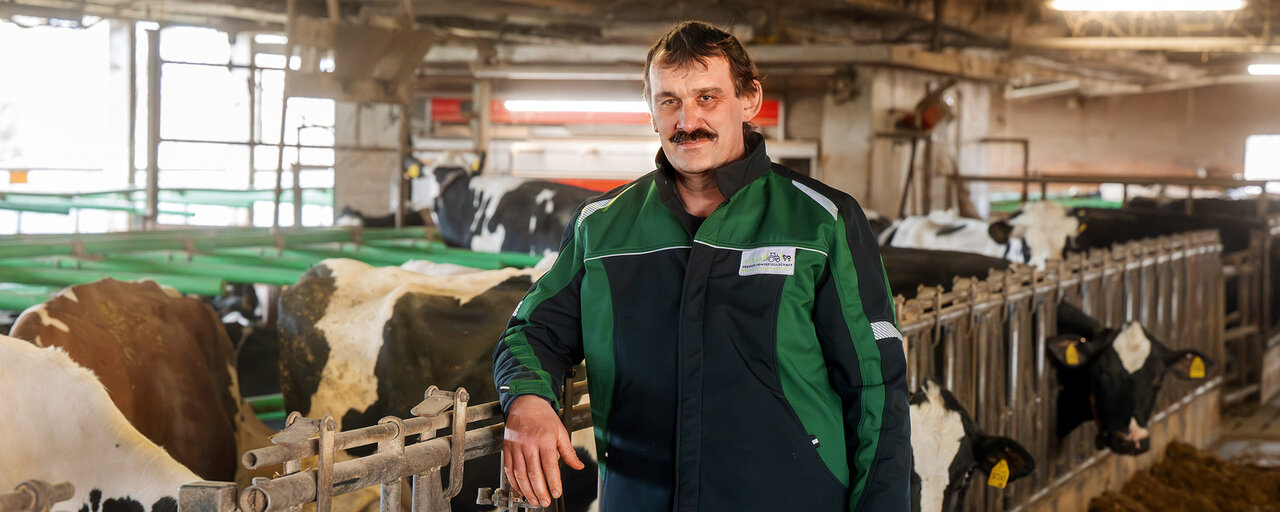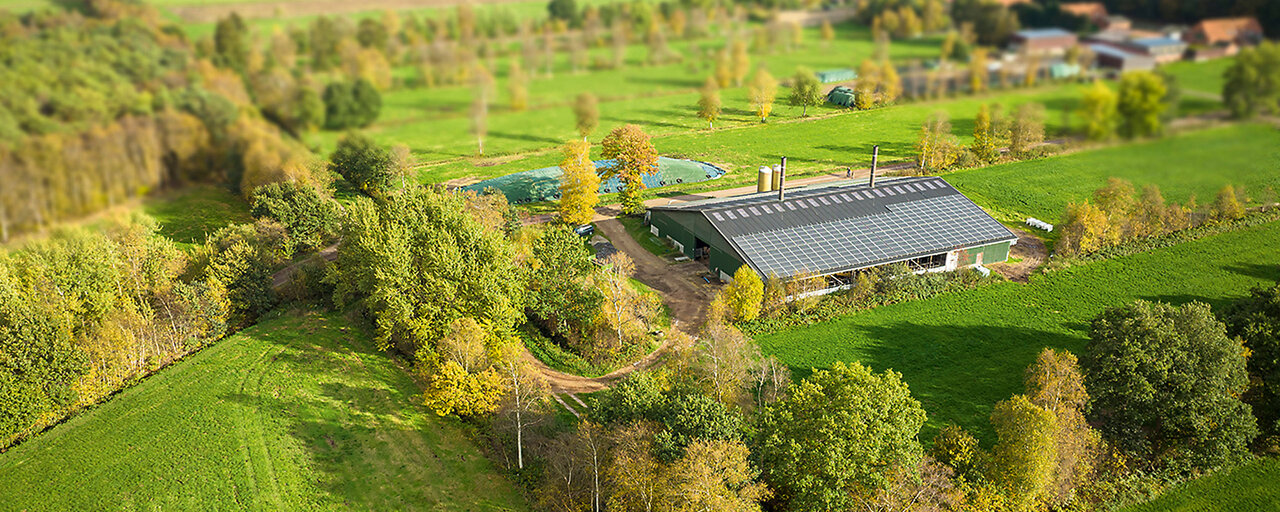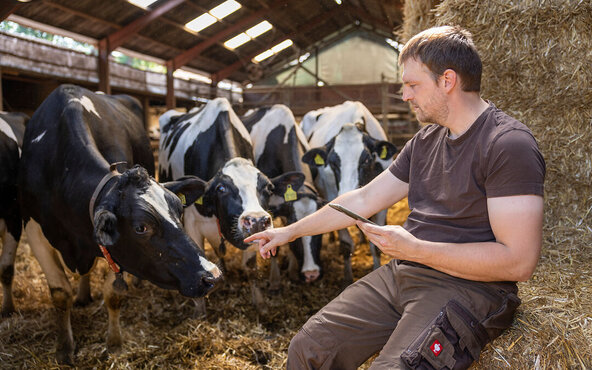
Why are you participating in the pilot project
The demands of politics and society on agriculture and therefore on food are increasing. As a farmer and food producer, it is therefore my ambition to also address the issues of quality and sustainability. I am sure that climate change is already visible and noticeable in our regions. This makes it even more necessary for me to take even better and more long-term care of my soil and my animals than past generations have done, for example. Our production basis, the soil, is particularly important here for the cultivation of cereals, maize, grass and clover.
However, all these changes towards sustainability require a great deal of knowledge and also financial resources, which I cannot simply provide from my own resources. It is therefore a great advantage to have our dairy cooperative the DMK Group as well as all the project partners behind us in order to work together towards the goal of sustainable, net zero dairy farming. Someone has to take the first step, and I wanted to be one of them, also against the background to then help my farmer colleagues with the new gained knowledge.
How is climate change affecting you as a farmer/the farming industry?
Climate change is already being felt by all farmers in Germany. Farmers have to adapt their strategies to the changing conditions in all areas of their business, be it cereal cultivation, grassland, biogas production, winegrowing or animal keeping. Above all, this means facing up to extreme weather periods, such as heavy rain, droughts lasting several months, warm winter months or even frosts in spring.
On our dairy farm, climate change is particularly evident in the fact that crop yields vary considerably. The quality of the fodder that we grow ourselves on the land also depends strongly on the weather conditions. For example, in one year, two out of five grassland harvests fail due to the severe drought and low groundwater levels and the maize plants are smaller than usual and the grains are not formed. This means that the cows are missing a third of their protein and energy in the feed. All these losses have to be bought expensive and from external sources. In another year, spring may start with so much rainfall that we can hardly go out into the fields to cultivat. In our planning, we always have to make sure that we build up sufficient reserves to compensate for all these effects of extreme weather conditions ourselves to remain independent of external and more expensive ressources.
How important are incentives to help you change?
We cannot initiate such enormous changes on our own. The risk of making big mistakes and losing a lot of money with some major changes or new types of machinery or innovative fertilisers and feed additives out of a knowledge-lack is very high. Product prices moreover do not yet reflect a major shift towards greater sustainability, although the demand for it is constantly rising.
It is therefore necessary to work with partners first in order to test new things with expertise and a certain amount of financial security and incorporate them into the everyday life of a dairy farm. We are dependent on profitable milk production, from which me and my family can make a good living and from which we can continue to develop our farm innovatively. Because sustainable food and its emission neutral production cannot be achieved at the ‘old price’. Therefore, support and appreciation from the market would have the biggest effect on our efforts. Moreover, with me taking part in the Net Zero pilot project, I am able to take my farmer colleagues from the cooperative with me on this journey, meaning that all members can benefit.
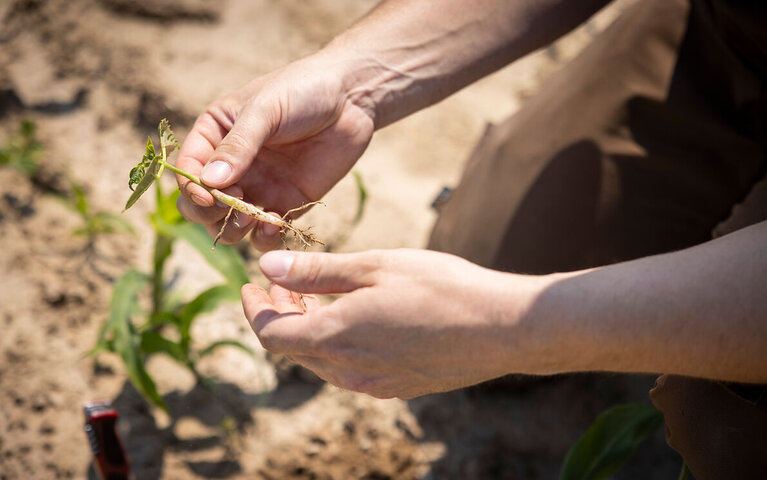
What was the most difficult change?
As our dairy farm had already been set up in many innovative and unconventional ways, we didn't have to make any changes to the stables or machinery, for example. The cows live in a free-range barn on straw and have daily access to pasture. We milk automatically and use a lot of sensor technology for monitoring.
I would say that the most difficult thing on our family farm was to set up an adapted management system. Because we had to change a running system: E.g. Setting and implementing new breeding goals for the herd, starting a stricter feed management system and monitoring it, learning to grow different forage crops and using them correctly. Every area of our farm has been given new tasks. The correct recording of facts and figures and their evaluation is crucial in order to measure the success of the individual actions taken towards the goal of climate-neutral farming. Fortunately, the project partners and DMK are primarily responsible for the latter.
What surprised you most in this process?
After the first precise calculation of our milk CO2 footprint, we discovered that the drivers of this value came to 1/3 from purchased products such as fertilisers and concentrated feed. In other words, products that we use but on which we have no influence on their production or origin. A balanced in-house production cycle therefore has an enormous impact on the carbon footprint of milk.
In addition, contrary to what is commonly believed, the most sustainable and climate-neutral farm is the one that operates most efficiently.
Has this made day-to-day practice more difficult or easier? Do you think it's worth it?
Daily practice has become much more complex. To make just some examples: It takes more steps and time to prepare the mixed ration with various additives, as well as to plan the mating of the cows, which follows different, more detailed breeding objectives. And almost everywhere the documentation effort has increased or or been added almost everywhere.
Overall, however, the routine works stay and are nearly the same as the herd is still the same size, the areas for forage production are the same and we are still the same team. However, we have of course different goals, have to integrate them in our daily work and keep them in our mind in every step we are taking forward. But I believe that all this makes sense and will also prove to be helpful. Because we have to find ways to deal with the climate and the changing environment, protect the soil and look after our animals to ensure that everyone can continue to consume high-quality food.
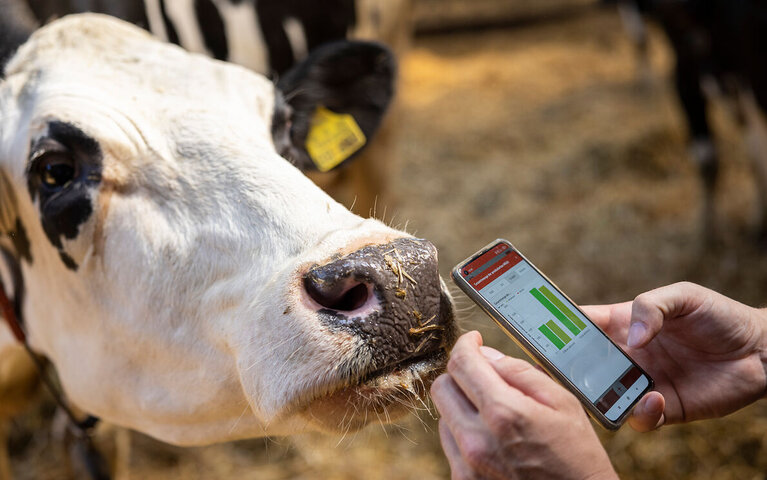
How would you encourage other farmers to make these changes?
There is a huge range of measures that can be taken to improve the sustainability and carbon footprint of a dairy farm. Any farmer who wants to start on the path to change or improvement should first know exactly where the farm stands. Afterwards the products or parts of the business should be identified, that have the biggest impact on the own CO2 footprint (this might vary from farm to farm) and then start with the appropriate measures.
For example: There are measures that have an immediate effect, such as the purchase of climate-friendly fertiliser or concentrated feed. Medium-term effects include, for example, adapted forage production or crop cultivation as a whole, as it always takes at least a year from planning to sowing to harvesting. Longer-term measures such as breeding need to be well decided as they do not have an effect until after three years (from mating to birth to the first milk).
I would like to tell every farmer that I have always received positive feedback when talking to friends and strangers about sustainable and future climate-neutral farming and milk production. It adds value to the argument that agriculture and cattle farming can be sustainable and modern after all, and that it addresses current social issues. Modern milk production with its organic fertilisers and innovative and partly regenerative crop production forms an economic cycle, that can be easily reconciled with the changing conditions of weather, climate and society and is still profitable in the end.
How long have you been a farmer?
After graduating from A-levels in 2010, I trained as a farmer and then went on to study agricultural business management. Since 2019, after various internships, I have been a permanent employee on our family farm and am responsible for forage production, feeding all the animals, maintaining the machinery and the tasks for product standards, dairy, controlling and documentation.
What does your working day normally look like?
A typical working day for me starts at 8.30 a.m., after I've got my daughter ready and taken her to nursery. In the mornings., I do routine stable work such as mucking out, bedding, feeding and observing the animals. My father and our employee look after the milking robots and herd the cows. There is also time for inseminations, visits of the vet if necessary, re-housing the young animals by age group once a week, maintenance of the milking robots or office time for phone calls and documentation.
After the lunch break from 2.00 pm, there is time for field work or the processing and preparation of the various mixed rations for cows, heifers and calves. Once or twice a week, all the lying areas are completely mucked out and the manure is taken to the co-operative biogas plant for recycling.
The routine work in the barn starts again at 5.00 p.m. and, depending on the shift and the amount of work involved, the day should end between 6.00 and 8.00 p.m.
However, there is often no ‘normal’ daily routine with predictable times, especially in the summer months there are many hours of harvesting work, and looking after the cows and young animals in the pastures takes more time. Occasionally they have to be caught again after an unplanned walk. I can't and shouldn't plan about 1/3 of the day, as there are always unforeseen things that have to be done anyway, not to mention the occasional night-time alarms from the milking robots.
